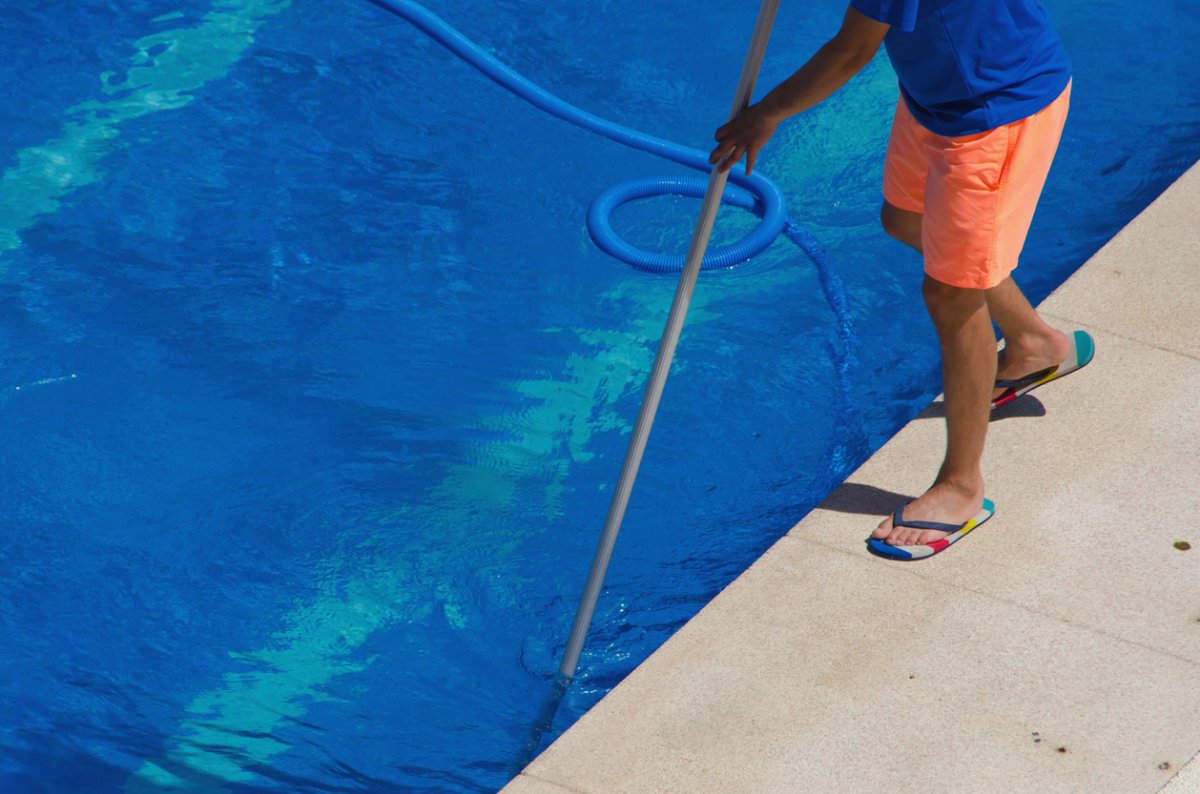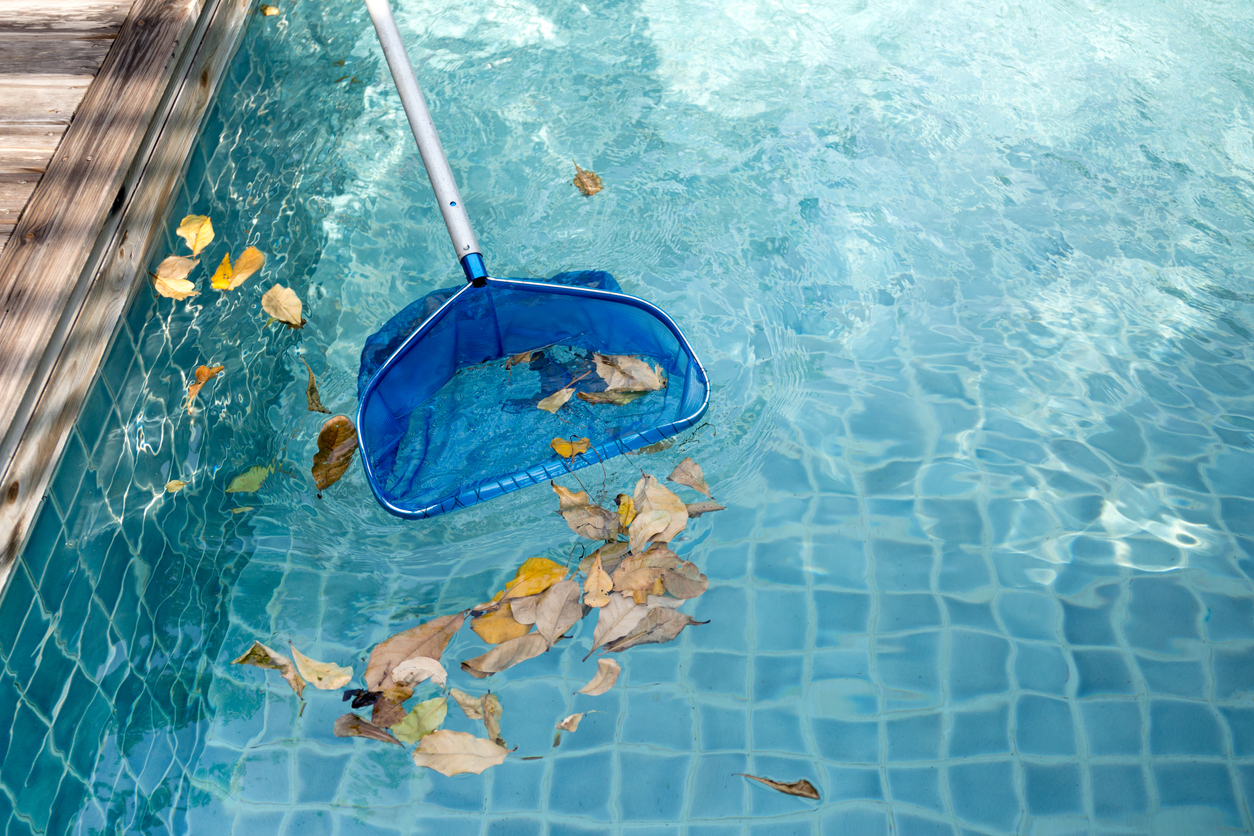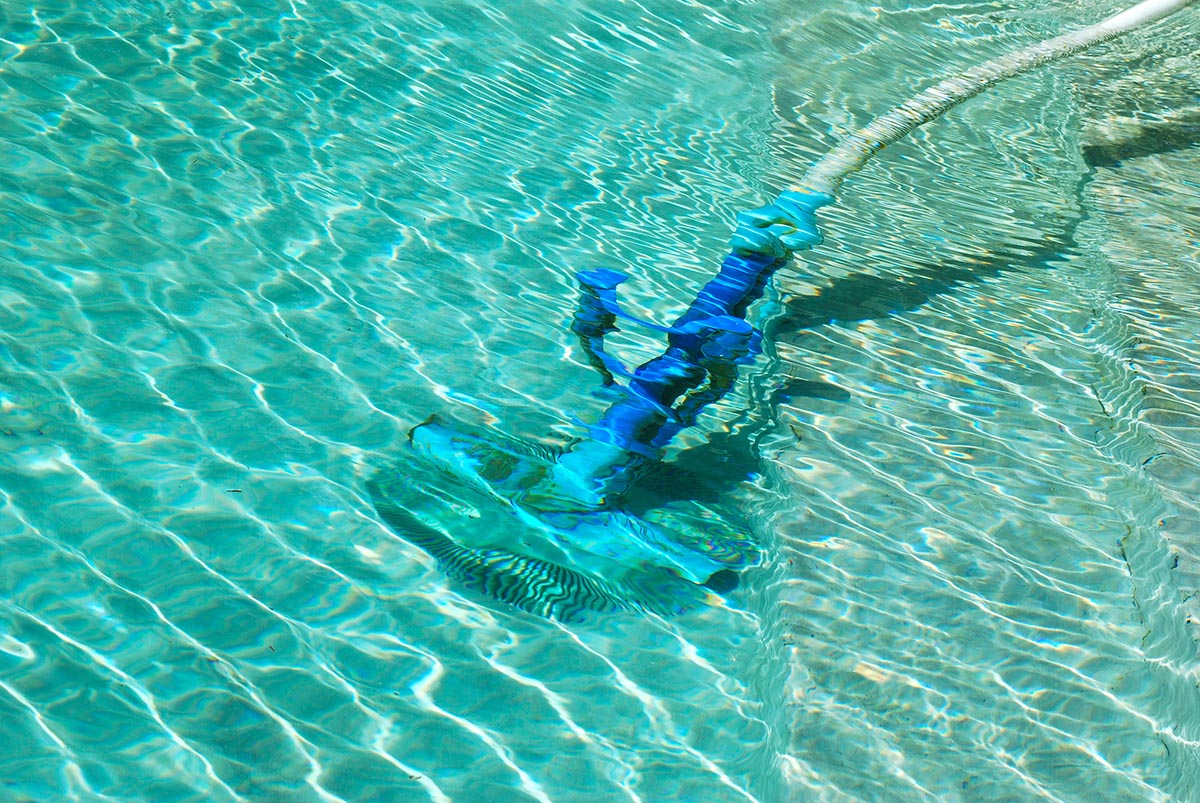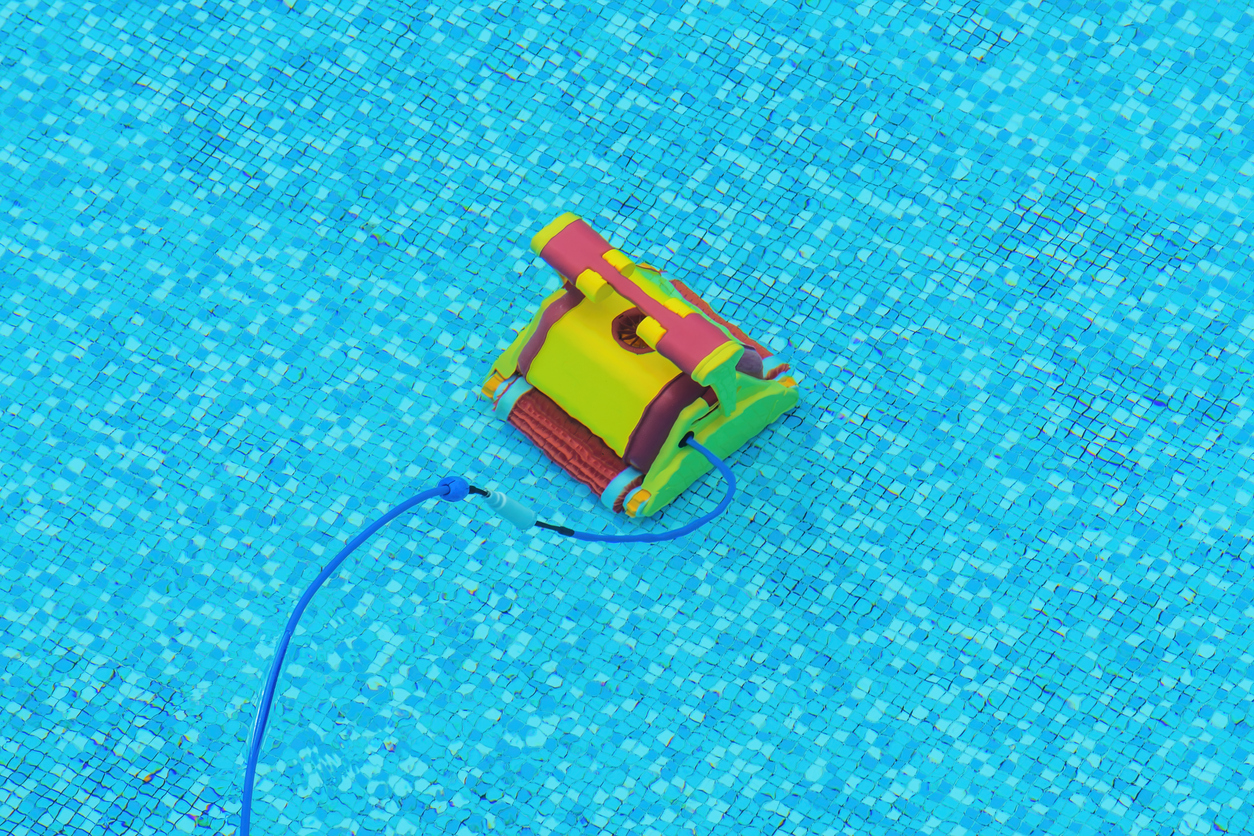

We may earn revenue from the products available on this page and participate in affiliate programs. Learn More ›
A pool is a huge benefit when the weather is hot, but without proper care and maintenance, the water can become an unwelcoming green soup filled with dirt, leaves, sticks, and other debris. To keep it clean, a pool should be vacuumed about once every 1 to 2 weeks, depending on the frequency of use, so it’s important to learn how to use a pool vacuum. The first step in pool vacuuming is to figure out how to hook up a pool vacuum properly, which can generally be determined by checking the pool vacuum manual. In addition to basic operational instructions, the information provided by the manufacturer should also answer the question: How does a pool vacuum work?
Learning how to vacuum an above-ground pool is essentially the same as figuring out how to vacuum an inground pool, with the only real differences being the size of the pool and the location of the filtration system. Before vacuuming a pool for the first time, familiarize yourself with the different types of pool vacuums available, which include manual, robotic, pressure, and suction vacuums. Manual and suction pool vacuums connect through the skimmer suction tube for suction power, while pressure pool vacuums connect to the return line. Robotic pool vacuums operate on battery power, so they don’t require much set up or help from the user. Once you have selected the best pool vacuum for the job, use this guide to learn how to vacuum a pool.
Tools & Materials
Bobvila.com may earn a commission from purchases made through these links.
Project Overview
Working Time: 1 hour and 30 minutes
Total Time: 2 hours
Skill Level: Beginner
Estimated Cost: $100 to $300
Before You Begin
It’s a good idea to use a skimmer net and a telescoping extension pole to remove sticks, leaves, and other debris. Additionally, when using a manual pool vacuum, a pressure pool vacuum, or a suction pool vacuum, it’s important to keep the vacuum submerged to avoid trapping air in the hose or putting strain on the pump and filtration system.
RELATED: The Best Pool Accessories

STEP 1: Set up the pool pump and filtration system.
Manual and suction pool vacuums rely on the skimmer suction tube for power, while pressure pool vacuums connect to a pool jet, so you need to set up the pump and filtration system before you begin. If you are using a robotic vacuum, then this step isn’t necessary. Before connecting the vacuum, clean out the skimmer basket with a garden hose and set it aside.
The filtration system must remain on when using a manual, suction, or pressure pool vacuum. For mildly soiled pools, the pool filter valve setting can remain on Filter, but for a heavily soiled pool, it should be set to Waste. This will force the dirty water out through the backwash hose, so make sure to have a garden hose nearby to refill the pool.
STEP 2: Prepare the pool vacuum.
A robotic pool vacuum can simply be turned on and lowered into the pool. There it will do all the navigation and vacuuming on its own without further involvement from the user. A pressure pool vacuum connects to a return jet or a dedicated cleaner line. The pressure of the water drives the vacuum around the pool and helps create suction to capture leaves and other debris. Once set up, the pressure pool vacuum will move around the pool on its own.
Both suction pool vacuums and manual vacuums need to connect to the skimmer suction tube. This is accomplished with a pool vacuum plate that fits inside the skimmer. Attach the plate to the vacuum hose, and then connect the hose to the vacuum head. If you are using a suction pool vacuum, the vacuum will move and clean the bottom of the pool on its own after the initial setup. For manual pool vacuums, the user will need to connect a telescoping extension pole to the vacuum and then maneuver it around the pool.

STEP 3: Submerge the pool vacuum.
The pool vacuum will have suction only if it is fully submerged. Additionally, the vacuum hose should be free of air, so it’s important to remove the air from the hose before you start to vacuum. This can be accomplished by lowering the vacuum head into the pool and submerging the vacuum hose, starting with the end that is attached to the vacuum head. The pool water should force out any remaining air, but if you still aren’t sure, simply place the free end of the vacuum hose against the pool jet to push water through the hose. Once the vacuum and hose are fully submerged, put the vacuum plate into the pool skimmer, where it should sit directly over the suction vent.
STEP 4: Vacuum the pool.
Automatic vacuums, including robotic, pressure, and suction pool vacuums, will operate on their own, moving along the bottom and sides of the pool to clean debris. Those with a manual pool vacuum will need to use the telescoping extension pole to move the vacuum across the bottom and sides of the pool to collect any dirt and debris, which is why it’s important to have an extension pole that can reach to the bottom center of the pool. Go slowly, and make sure the vacuum sucks up as much dirt and grime as possible.
STEP 5: Remove the pool vacuum.
When you are satisfied that the pool is clean, turn the filtration system off and remove the vacuum. For a robotic vacuum, simply lift the machine out of the pool and empty the collection basket. A pressure pool vacuum will need to be disconnected from the return line, and then the collection basket will need to be emptied.
Both suction and manual pool vacuums empty into the filtration system, so there is no collection basket to worry about. Simply disconnect the pool vacuum plate from the suction vent, and then remove the vacuum from the pool, drain the water, and detach the hose, extension pole, and vacuum plate. Set the vacuum and all components aside in a safe space to dry before storing until next use.
STEP 6: Flush the filtration system.
After you’ve vacuumed the pool, the collected dirt and debris will remain in the filtration system until it is properly flushed. If you were vacuuming with the filter set to Waste, then this step isn’t required, but if you vacuumed the pool using the Filter setting, it’s a good idea to flush the system to get rid of the accumulated dirt and grime.
Roll out the backwash hose and direct it to a suitable drainage location, and then set the filtration system to Waste and allow the water to run until clear. When the water runs clear, set the filtration system back to Filter, and roll up the backwash hose. This is also a good time to test the pool water and add any necessary chemicals to balance the pool water chemistry.
RELATED: How Much Does Pool Maintenance Cost?

Final Thoughts
Vacuuming a swimming pool isn’t a difficult job, but to ensure that the pool remains in good condition, it is an essential part of ongoing pool maintenance. Whether you choose to use an automatic or a manual vacuum, make sure to vacuum the pool about once every 1 to 2 weeks, depending on the frequency of use.
Additionally, though you can swim while a vacuum is running, it’s worth noting that the movement through the water can kick up dirt and debris, making it more difficult for the vacuum to adequately clean the pool. With this in mind, it’s recommended to finish vacuuming the pool before diving into the water.
